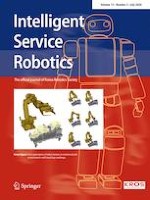21-05-2020 | Original Research Paper
Optimal configuration selection for stiffness identification of 7-Dof collaborative robots
Published in: Intelligent Service Robotics | Issue 3/2020
Log inActivate our intelligent search to find suitable subject content or patents.
Select sections of text to find matching patents with Artificial Intelligence. powered by
Select sections of text to find additional relevant content using AI-assisted search. powered by
